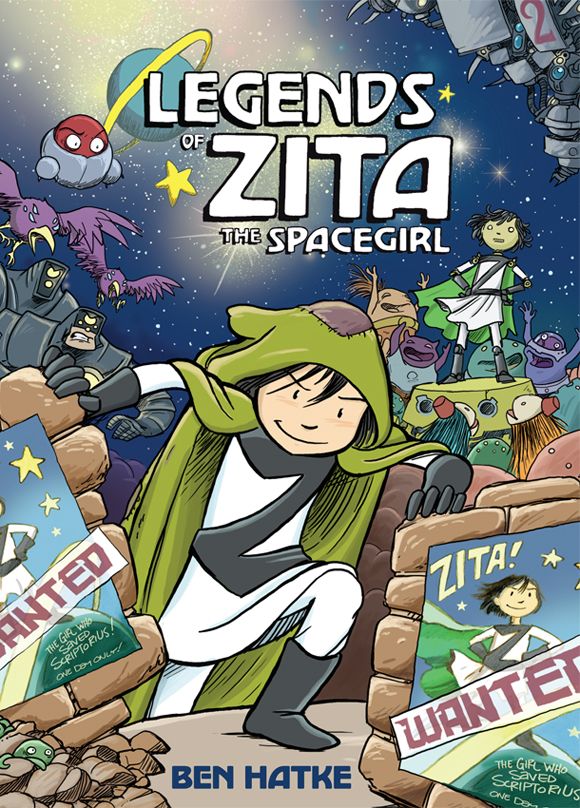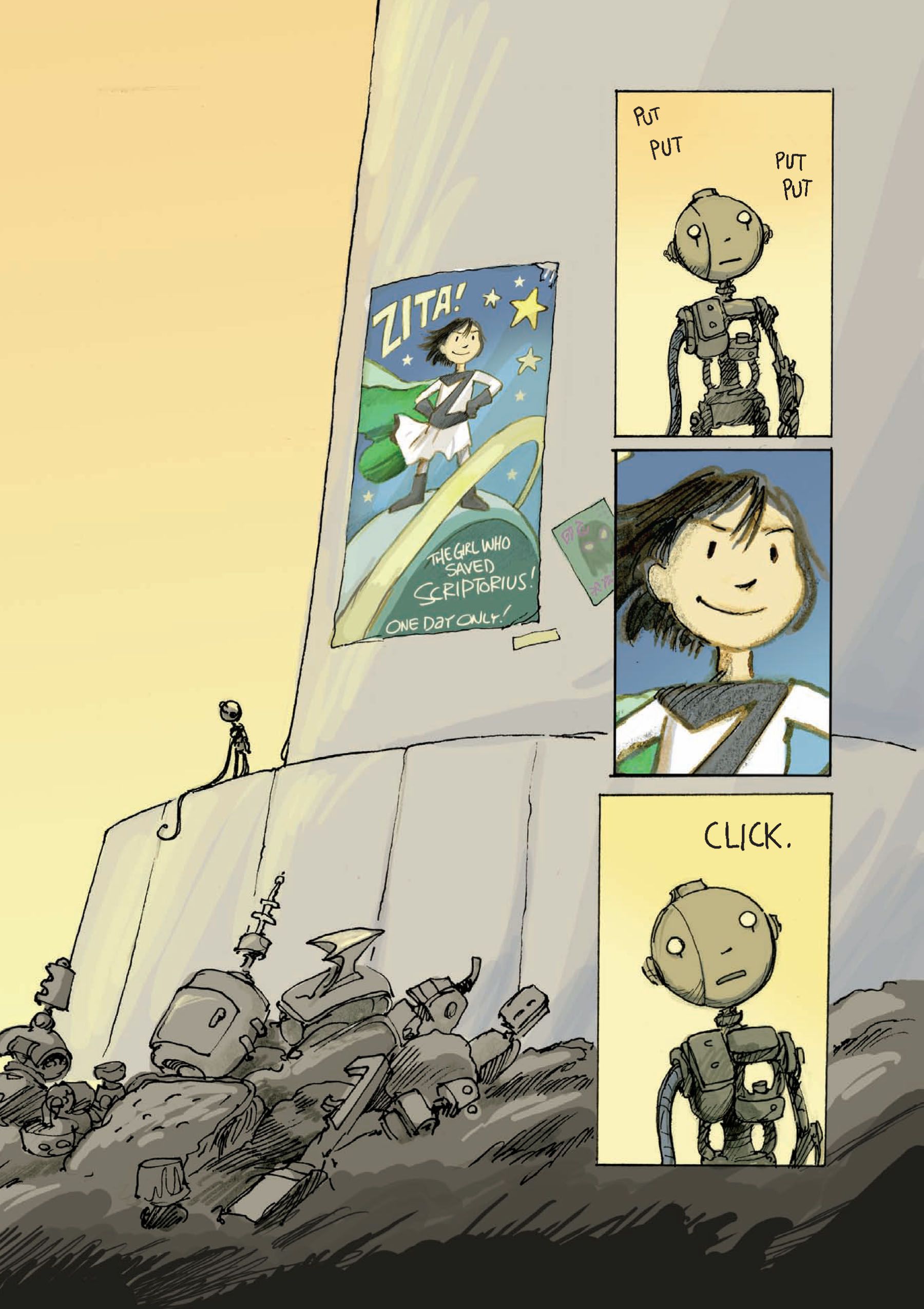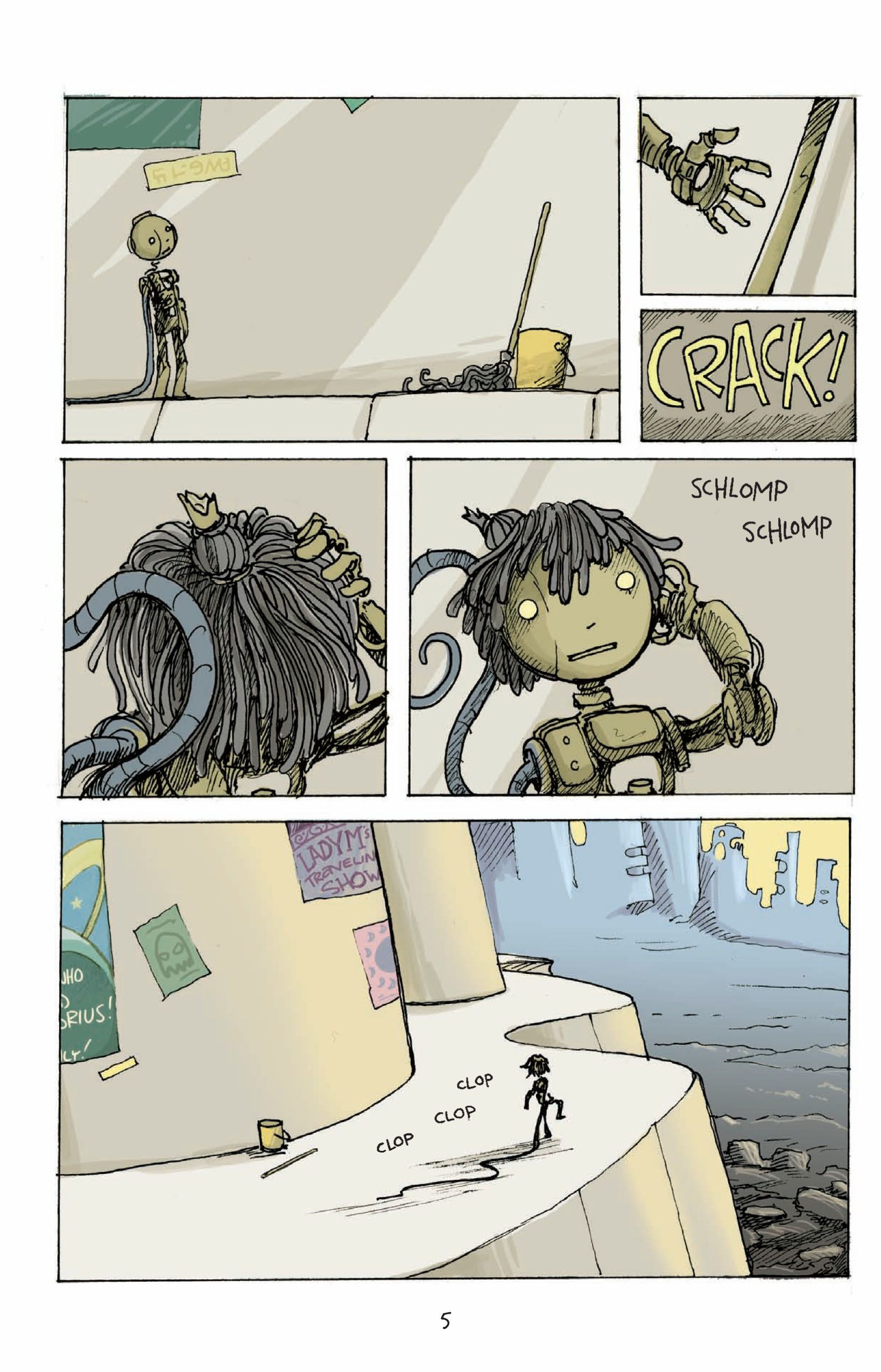I wasn't very familiar with Ben Hatke's work before I met him in 2010 at the Small Press Expo, apart from reading his contribution to the second Flight anthology. So I was pleasantly taken by surprise at how charming his debut graphic novel, the all-ages Zita the Spacegirl, is. The book, about a young girl who is inadvertently transported to another galaxy full of strange and fearsome aliens, adheres closely in style to many well-worn fantasy adventure comics. But it manages to stand out from the pack with a cast of broad, engaging characters, an appealing heroine, and some smartly (and tightly) paced actions scenes.
Now Hatke has a sequel, Legends of Zita the Spacegirl, which finds the pint-sized interplanetary traveler struggling to cope with her new-found celebrity, and encountering a would-be impostor who's more than happy to taker her place.
I talked with Hatke about the new Zita book, how he became a cartoonist, and his goals for the series.
Robot 6: Tell me a little bit about yourself. How did you get interested in comics and what made you decide to make the leap and become a cartoonist?
Ben Hatke: I can’t remember a time when I wasn’t interested in comics in some form. In grade school I spent a lot of time saving up for the collected books of Garfield strips and Calvin and Hobbes collections. I also had one of the Smurfs books, King Smurf, which is kind of a weird anti-monarchy political parable, but really great cartooning. One day I found an old Spider-Man comic book left behind in an empty house my parents were cleaning. Spidey was fighting Dr. Doom and getting the brunt of it. I was hooked after that.
I later was introduced to Elfquest, by Wendy and Richard Pini, and discovered that you could tell really long, epic stories in comics.
Later, after I had started doing freelance illustration, I started making short webcomics about Zita, this girl traveling from world to world, and around the same time I got involved in the Flight anthologies through the message boards.
How did you get involved with the Flight crowd? Was your work there your first published comics?
Yes, the Flight stories were really my first widely published pieces and I was very lucky to get involved. I learned so much from being involved with the Flight crew and in that project. I had never before had other cartoonists to share ideas with. Before Flight, making comics was more of a lonely pursuit.
When I discovered the Flight message boards I was really impressed by Kazu Kibuishi’s Copper comics and how he was telling a concise story, with beautiful art, in a small format -- just one page. I challenged myself to become better at making comics by doing something similar (short webcomics) with Zita the Spacegirl. The Zita webcomics were episodic, had no overarching story line, but they gave me room to grow.
How did Zita come to be? Were you interested in doing a fantasy/sci-fi story from the beginning or did the character come first?
The character came first, but the worlds she was traveling through were pretty amorphous in the early comics, and there was never any stated reason for her travels. She was just always on the move.
When I signed on to do a book I knew that all her travels were in an effort to get back home to Earth, but my earliest drafts of the book still picked up somewhere in the middle of her journey. Everything came together when I decided to tell how and why this young girl ended up so far from home in the first place.
What are some of your influences on Zita? I detect, for example, a bit of Jim Henson, especially in the design of the aliens and various monsters.
I do love me some Jim Henson! From the strange fantasy designs of The Dark Crystal to the zany colorful world of the Muppets. If there were ever a film version of Zita it would be my dream to have the Jim Henson Creature Shop involved.
But I also find a lot of inspiration from all kinds of art, and especially, lately, from the Golden Age illustrators like Arthur Rackham and Howard Pyle. Hayao Miyazaki’s films (and his awesome watercolored concept art), the comics of Joann Sfar (I just found his adaptation of Exupery’s The Little Prince), and I recently discovered the works of Moebius -- I guess I’m a little behind on that one.
Tell me about your working process. How do the Zita stories come together? Do you write out the plot and dialogue first and then do your pencils or is it more organic than that?
I think the goal of the process that I’ve come up with is to strike a balance between order and chaos. Things stay fresh and engaging when I have at least a sense that I’m flying by the seat of my pants, making stuff up as I go.
I don’t work with a full script. I start by writing an outline of about 12 to 14 points. The outline is the skeleton of the story and all the major story beats are there. At about the same time, I open a new sketchbook and just start throwing ideas and character designs into it. I doodle out key scenes and environments.
Then I pretty much move right into making finished pages. I try to stay about 20 pages ahead of myself in thumbnails (very rough, scribbly page designs). In this phase I’m drawing finished art for half the day but for the other part of the day I’m still making up the dialogue and framing almost on the fly.
After that, when I have a whole draft, comes the editorial process. I redraft scenes that don’t work and work on a lot of the smaller edits as I move into the final task of coloring the book.
Do you see Zita as being a perpetually ongoing series or do you have a definitive end in mind?
Zita’s story does have a definitive (and I hope satisfying) end. It ends with the third book, which I’m coloring now (and which is, incidentally, shaping up to be my favorite of the three volumes).
So Zita’s story is a trilogy, but I still have a feeling that I'll be revisiting her world in the future ...




